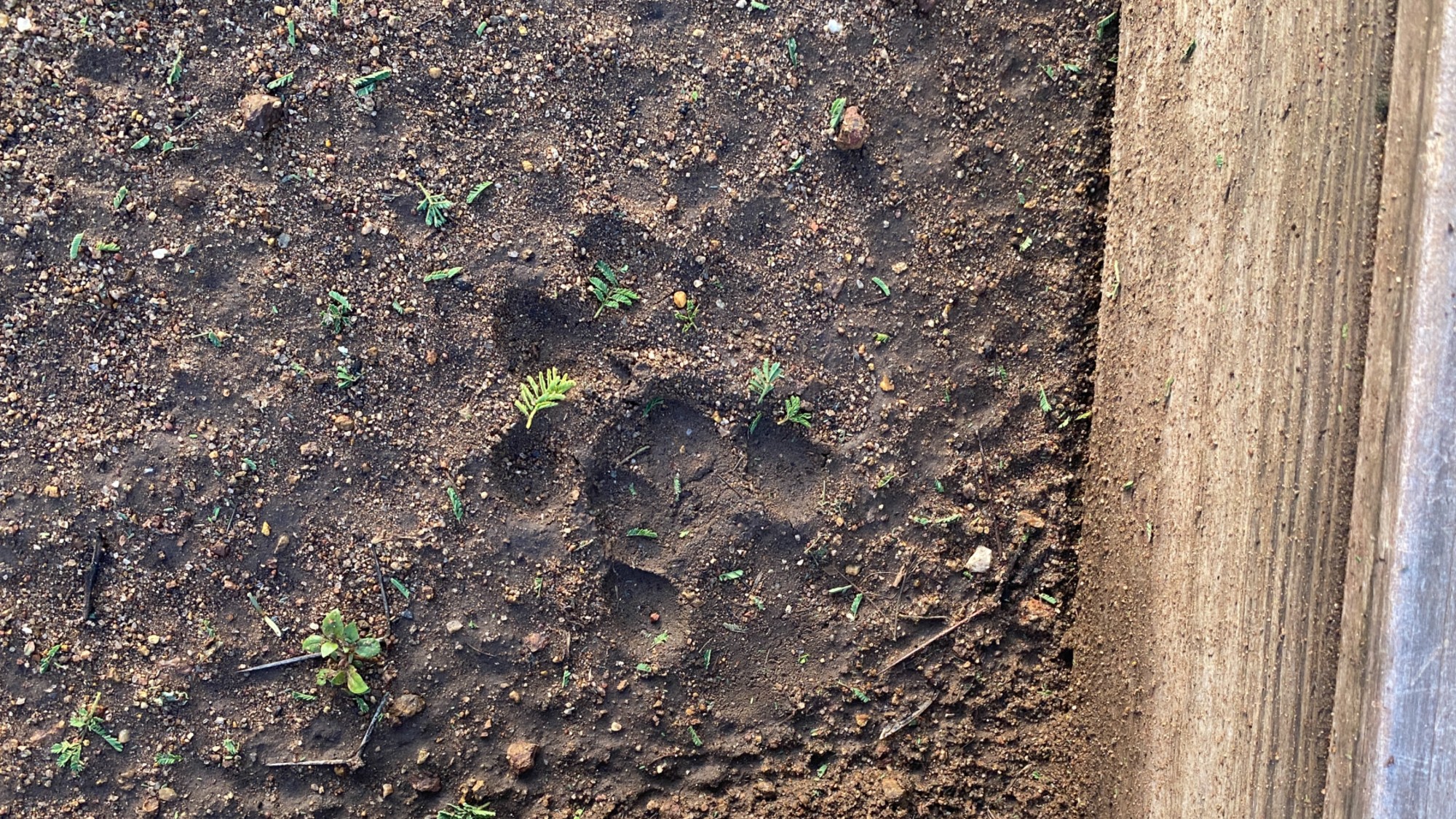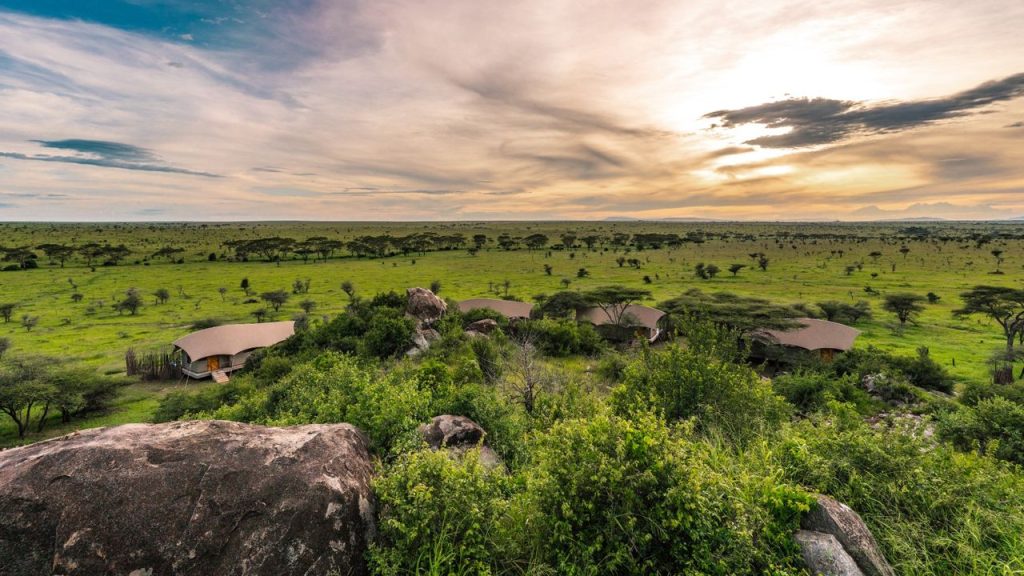No fences, no pylons, no concrete. That’s what allows the “Great Migration”, when more than a million wildebeest, zebra and gazelles cross the plains of the Serengeti in northern Tanzania, up to the Maasai Mara in Kenya in what is the biggest movement of mammals on Earth.
The untamed wildness of this East African nation came into focus at the Lemala Nanyukie Lodge. Walking between your tent and the main lodge, dodging rocky kopjes under ancient acacia trees, a Maasai guide accompanies you – with an impressive spear – at all times. I thought it was overprotective until I spent my first night listening to the sounds of harrumphing, crunching and growling outside, conscious that just a few millimetres of canvas lay between me and the natural world. The next morning, I emerged into the dew and stepped right into a lion’s pawprint.

Why visit?
Tourists might know Tanzania for beach holidays in Zanzibar, the vibrant spice archipelago, or for climbing Mount Kilimanjaro, the highest free-standing mountain in the world. But nearly 40% of Tanzania is protected land, unscathed by humans, making it the ultimate safari destination. Without fences, the animals move freely between their natural habitat. It makes for a more authentic experience than a safari in say, South Africa, but it’s perhaps more “advanced”. (Translation: you won’t see a toilet for hours.)
Tanzania is most popular during the dry season – but we’d recommend visiting during its “emerald season”. From November to April, the rains transform the country into a verdant paradise. That doesn’t stop you from seeing the animals; on the contrary, you benefit from the cooler temperatures, watching predators hunt for their prey in the softer grass as jewel-coloured birds swoop overhead. What you’ll see less of is crowds.
Lemala Camps & Lodges is a collection of luxury accommodation across Tanzania’s best spots. But what sets the brand apart is its work with local communities – Lemala has donated hundreds of reusable sanitary pads, and offered menstrual education in schools, to tackle period stigma among Maasai communities. It has also won multiple awards for sustainability: it has no single-use plastics and offers biodegradable lunchboxes made from banana leaves by a women’s collective. Each property is comfortable but personal.
Walking on the wild side in Tarangire
Begin your journey in Arusha, a vibrant city at the foot of Mount Meru, about an hour and a half’s drive from Kilimanjaro International Airport. The gateway to the northern safari circuit, Arusha is also known as the “Geneva of Africa” for its peacefulness and its role as a centre of diplomacy, as much as the springs that run down the mountain.
The idyllic Arusha Coffee Lodge is perfect for a recharge: an oasis surrounded by tropical flowers. The lodge shares its space with a social enterprise, Shanga, that supports people with disabilities by teaching them to create crafts from recycled materials. It began with six women making necklaces – shanga is Swahili for bead – and now employs 52 people. You watch them create fabric on a loom from locally grown cotton, or turn old bottles into beautiful glassware – and you can purchase keepsakes knowing your money is supporting a sustainable cause.
From Arusha, drive two and a half hours to Tarangire National Park, known for its abundant elephant herds and almost-as-enormous baobab trees. The vast population of elephants – the largest in Africa – is a product of the diversity of the landscape. Wide, open grassland allows the animals to roam, while the dotted woodlands support their hefty appetites.
The park is named after the Tarangire River (literally: river of warthogs), the lifeblood that sustains so much wildlife and, in particular, bird life. The lilac-breasted roller, probably the most photographed bird in Africa thanks to its Pollock-esque coloured plumage, became an instant favourite. During the rainy season, the plains are also dotted with fireball lilies, as vibrant as their names.
You get a good sense of the vastness at Lemala Mpingo Ridge, perched on a high outcrop. On a clear morning, you can see the far peak of Mount Kilimanjaro. There’s no WiFi or charging plugs in the main lodge, encouraging you to socialise. Guests gather to watch “bush TV” – to sit around the firepit, gazing into the pitch-black valley as giant beetles and dragonflies dart overhead.
Tarangire is the only park in northern Tanzania to offer a night game drive – there are often too many cars in the Serengeti. It’s a totally different experience from a day drive, trying to spot animals by the torch-glare reflection in their eyes, with just the stars to pierce the velvety darkness.
Lemala also offers daytime “walking safaris”, so you can get up close and personal with nature. Andrea Pompele, an evolutionary biology grad and head of guiding at Lemala, is a professional tracker with 12 years’ experience. As we trudge through the sparkling wet grass, he shows off his skills: not only can he identify how old dung is, but he can tell you what animal it came from, and even whether it was male or female. He encourages us to interact with the landscape, scraping off bits of baobab bark for us to chew – like dry jerky with a slight cardboard taste – or handing us skulls to feel.
Meeting the Maasai
Another unique experience Lemala offers is a visit to a nearby Maasai village, Olasiti. The Maasai, based in northern Tanzania and southern Kenya, are known worldwide for their fabulously colourful cloaks, intricate beaded jewellery and traditional, semi-nomadic lifestyles. The dusty boma (commune) is lit up by the rich reds, greens and yellows of their robes.
Sitting inside the chief’s home, within dung walls and under its thatched roof, we learn more about the lives and traditions of the villages. Lobulu, the chief, tells us the story of how he won his first of three wives: by killing a lion. The women dressed us in robes and led us in a traditional courtship dance with the men of the village. No lions were harmed, but it’s possible that I am now engaged.
Soaring over the Serengeti
In the Maasai language, the Serengeti means “endless plains”. One of Africa’s most famous national parks, it’s known for its abundance of wildlife and, in particular, its massive concentration of predators.
Fly directly from Arusha to the Seronera Airstrip, taking in the vast Ngorongoro Crater below you. That’s an ancient depression, formed when a giant volcano exploded millions of years ago. It’s now a Unesco World Heritage Site: the largest intact caldera in the world, and home to more than 30,000 animals.
From Seronera, it’s an hour to Lemala Nanyukie Lodge, a collection of 15 tents with private plunge pools and views of the rain-soaked savannah. Nanyukie is named after the river, which tempts the buffalo and elephants close to the lodge with its year-round flowing water. If you wanted to get close to the big cats of the Serengeti, you couldn’t pick a better spot: there’s a resident leopard close by, known as Red Eye, and the lionesses apparently like to give birth on the rocks behind the spa tent.
But neither walking nor driving safaris can compare with a flying one. At sunrise, we lift off in a hot-air balloon to soar above the savannah. Just below the candlyfloss clouds, we lean over the basket to spot the animals below, with just the balloon’s shadow to interrupt the view. The company, Serengeti Balloon Safaris, is ranked the world’s best hot-air balloon operator: the first time an African business has won that title. After we come back down to earth, we enjoy a champagne feast to toast their success.
The verdict
Tanzania’s national animal is a Maasai giraffe, known as twiga in Swahili. As we watch them lope across the grasslands, unfenced and remarkably unbothered, it occurs to me how fitting that is. They represent ancient Maasai culture, grace, beauty and peaceful wildlife tourism. They’re also unforgettable.
Harriet Marsden travelled as a guest of Lemala Camps & Lodges and Kuoni Travel, based on the eight-night itinerary, Tanzania’s Great Migration
The vast protected landscapes are transformed into a verdant paradise during ‘emerald season’
